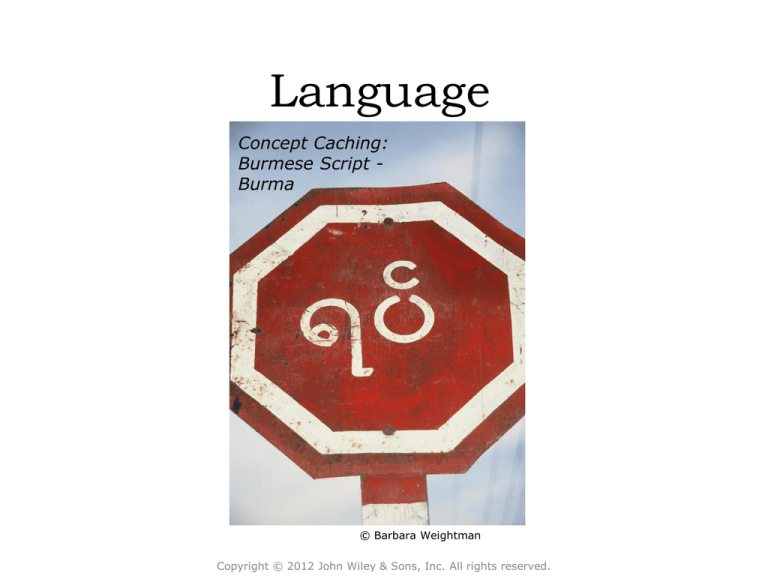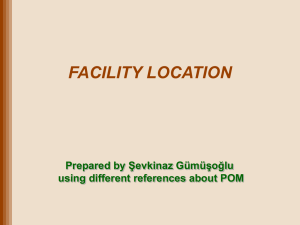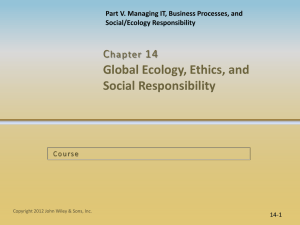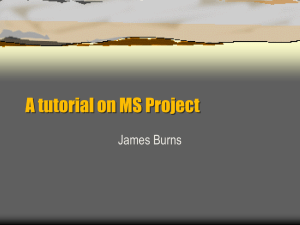
Language
Concept Caching:
Burmese Script Burma
© Barbara Weightman
Copyright © 2012 John Wiley & Sons, Inc. All rights reserved.
Field Note:
What Should I Say?
“In stores throughout Brussels, Belgium, you can see the capital city’s
bilingualism all around you—literally. From McDonald’s to health
insurance offices to the metro, signs in Brussels are posted in duplicate,
with one in Flemish (a variant of Dutch) and one in French.”
© 2012 John Wiley & Sons, Inc. All rights reserved.
Key Question
What Are Languages, and What
Role Do Languages Play in
Cultures?
© 2012 John Wiley & Sons, Inc. All rights reserved.
What Are Languages, and What Role
Do Languages Play in Cultures?
• Language is a set of sounds and symbols
that is used for communication.
• Language is an integral part of culture.
Language and Culture
• Language reflects where a culture has been
and what it values.
• Language makes people in a culture visible
to each other and to the world.
© 2012 John Wiley & Sons, Inc. All rights reserved.
© 2012 John Wiley & Sons, Inc. All rights reserved.
What Are Languages, and What Role
Do Languages Play in Cultures?
Language and Culture
• American, Canadian, Australian, Russian,
and New Zealand governments had policies
of forced assimilation during the twentieth
century, including not allowing indigenous
peoples to speak native languages.
• Language is so closely tied to culture that
people use language as a weapon in
cultural conflict and political strife.
© 2012 John Wiley & Sons, Inc. All rights reserved.
• In 1993, the Quebec government passed a
law requiring the use of French in
advertising.
© 2012 John Wiley & Sons, Inc. All rights reserved.
What Are Languages, and What Role
Do Languages Play in Cultures?
What Is a Language?
• Mutual intelligibility:
• Two people can understand each other
when speaking.
• Is almost impossible to measure.
• Some languages are separate but are
mutually intelligible.
• Decision of what a standard language will
be has to do with influence and power.
© 2012 John Wiley & Sons, Inc. All rights reserved.
What Are Languages, and What Role
Do Languages Play in Cultures?
Dialects
• Variants of a standard language along
regional or ethnic lines
• Differences in vocabulary, syntax,
pronunciation, cadence, and pace of speech
• Dialect chains:a set of contiguous dialects
in which the dialects nearest to each other
at any place in the chain are most closely
related
• Isogloss: geographic boundary within which
a particular linguistic feature occurs
© 2012 John Wiley & Sons, Inc. All rights reserved.
© 2012 John Wiley & Sons, Inc. All rights reserved.
Key Question
Why are languages distributed
the way they are?
© 2012 John Wiley & Sons, Inc. All rights reserved.
• Language families
Subfamilies
© 2012 John Wiley & Sons, Inc. All rights reserved.
Classification of Language
Language Family
Major Language
Location
Indo-European
Germanic, Romance,
Americas, Europe, SW
Baltic Slavic, Indo-Iranian Asia, Australia, South
Africa
Sino-Tibetan
Sino=Chinese
Japanese &
Korean
Afro-Asiatic
Mandarin and Cantonese China, SE Asia
Chinese
Dravidian
Malayalam, Telugu, Tamil India
Austronesian
Malay Indonesian,
Sudanese
Indonesia, Malaysia,
Philippines, Madagascar
Altaic and Uralic
Mongolian, Kazah,
Turkish, Uzbek
Russia, Northern Asia,
Finland, Turkey
Khoisan
Bantu
Sub-Saharan Africa
Japanese and Korean
Japan, Korea
Arabic, Hebrew
North Africa, Arabian
Peninsula, holy books
Why Are Languages Distributed the
Way They Are?
Definition and Debate
• The classification of languages is subject to
intense debate.
• Some linguists argue that there are not just
a few but many dozens of language families.
© 2012 John Wiley & Sons, Inc. All rights reserved.
Why Are Languages Distributed the
Way They Are?
Language Formation
• Sound shift is a slight change in a word
across languages within a subfamily or
through a language family from the present
backward toward its origin
• Ex.: Italian, Spanish and French as members
of the Romance language subfamily
• Proto-Indo-European language: first major
linguistic hypothesis; from studies of Jakob
Grimm and William Jones
© 2012 John Wiley & Sons, Inc. All rights reserved.
Why Are Languages Distributed the
Way They Are?
Reconstructing the Vocabulary of ProtoIndo-European and Its Ancient Ancestor
• Backward reconstruction: to track sound shifts
and hardening of consonants “backward” toward the
original language
• Extinct language, a language without any native
speakers
• Deep reconstruction: recreating the language that
preceded it
• Vladislav Illich-Svitych and Aharon Dolgopolsky:
Nostratic language
© 2012 John Wiley & Sons, Inc. All rights reserved.
Why Are Languages Distributed the
Way They Are?
Locating the Hearth of
Proto-Indo-European
• German linguist August Schleicher: language
divergence, where new language forms from old one.
• Language convergence: collapsing two languages
into one.
• Language extinction occurs when all descendants
perish or they choose to use another language
(typically occurs over several generations).
• Linguists theorize that the hearth of the Proto-IndoEuropean language was somewhere in the vicinity of
the Black Sea or east-central Europe.
© 2012 John Wiley & Sons, Inc. All rights reserved.
© 2012 John Wiley & Sons, Inc. All rights reserved.
Figure 6.10
Northwest Amazon, Colombia.
The Barasana people, who live in the northwest Amazon in Colombia, have maintained
their language and land-use systems despite external pressures. In 1991, the
government of Colombia recognized the legal right of the Barasana to their land, which
has aided the maintenance of their language. ©Eye Ubiquitous/Superstock
© 2012 John Wiley & Sons, Inc. All rights reserved.
Why Are Languages Distributed the
Way They Are?
Tracing the Routes of Diffusion of
Proto-Indo-European
• Commonality among language diffusion
theories is a focus on Europe.
• For Proto-Indo-European, it is clear that
that the language diffused into Europe over
time, and that a significant body of
historical research and archaeology focuses
on the early peopling of Europe.
© 2012 John Wiley & Sons, Inc. All rights reserved.
Tracing the Routes of Diffusion of
Proto-Indo-European
• Conquest theory: early speakers of Proto-IndoEuropean spread east to west on horseback,
overpowering earlier inhabitants and beginning the
diffusion/differentiation of Indo-European tongues.
• An alternative agricultural theory proposes that
Proto-Indo-European diffused westward through
Europe with the diffusion of agriculture.
• Dispersal hypothesis: the Indo-European
languages that arose from Proto-Indo-European
were first carried eastward into Southwest Asia,
next around the Caspian Sea, and then across the
Russian-Ukrainian plains and on into the Balkans.
© 2012 John Wiley & Sons, Inc. All rights reserved.
Figure 6.11
Indo-European Language
Family: Proposed Westward
Dispersal. Approximate timings
and routes for the westward
dispersal of the Indo-European
languages.
Figure 6.12
Indo-European Language Family:
Proposed Hearth and Dispersal
Hypothesis. This theory proposes that
the Indo-European language family began
in the Caucasus Mountain region and
dispersed eastward before diffusing
westward. Adapted with permission from:
Gamkrelidze and Ivanov, 1990, p. 112.
© 2012 John Wiley & Sons, Inc. All rights reserved.
The Languages of Europe
© 2012 John Wiley & Sons, Inc. All rights reserved.
IndoEuropean Languages
The Subfamilies
• Romance languages:
• French, Italian, Spanish, Romanian, and
Portuguese
• Have much in common because of their Latin
connection, but are not mutually comprehensible
• Germanic languages (English, German, Danish,
Norwegian, and Swedish) reflect the expansion of
peoples out of northern Europe west and south.
• Slavic/Slavonic languages (Russian, Polish, Czech,
Slovak, Ukrainian, Slovenian, Serbo-Croatian, &
Bulgarian) developed as Slavic people migrated from
a base in present-day Ukraine about 2,000 years
ago.
© 2012 John Wiley & Sons, Inc. All rights reserved.
The Languages of Europe
Language and Politics
• A comparison of Europe’s linguistic and political maps
shows a high correlation between the languages
spoken and the political organization of space.
• A few important exceptions: French speakers in
Concept Caching:
Belgium, Switzerland,
and Italy; German speakers in
Mount Vesuvius
Hungary; Hungarian speakers in Slovakia Romania
and Yugoslavia; Romanian speakers in Moldavia and
Greece; Turkish speakers in Bulgaria; Albanian
speakers in Serbia.
• The Basque language of Euskera covers a very small
land area and is in no way related to any other
language family in Europe.
© 2012 John Wiley & Sons, Inc. All rights reserved.
Conflicts Due to Language Differences
• Countries in which more than one
language is in
• use are called multilingual states.
• Multilingualism takes on many
forms. In
• bilingual Canada, regional
divisions can be found
• between French-speaking
Quebec and the rest of
• the country. The Quebecois have
been diligent in
• passing several language laws
(e.g. French signs,
• menus, etc…).
Figure 6.13
San Sebastián, Spain. Graffiti on the wall of this building uses
the English language, “Freedom for the Basque Country,” to show
support for the Basque separatist movement. © Denise Powell
© 2012 John Wiley & Sons, Inc. All rights reserved.
Why Are Languages Distributed the
Way They Are?
Languages of
Subsaharan Africa
• Niger-Congo language
family dominates.
• Oldest Subsaharan
languages are the
Khoisan languages,
which include a “click”
sound.
© 2012 John Wiley & Sons, Inc. All rights reserved.
Why Are Languages Distributed the
Way They Are?
Languages of Subsaharan Africa
•
•
Nigeria’s 141 million people speak more than 500
different languages.
The three most prominent languages are distributed
regionally:
•
•
•
Hausa in the north; 35 million people
Yoruba in the southwest; 25 million people
Ibo in the southeast; over 25 million people
• When Nigeria gained independence in 1962, it adopted
English as the “official” language, as the three major
regional languages are too politically charged and thus
unsuitable as national languages.
© 2012 John Wiley & Sons, Inc. All rights reserved.
Key Question
How do languages diffuse?
© 2012 John Wiley & Sons, Inc. All rights reserved.
How Do Languages Diffuse?
•
•
•
•
By 2,000 years ago, languages such as Chinese and
Latin had successfully diffused over large regions.
In the late Middle Ages, the invention of the
Gutenberg printing press and the rise of nationstates worked to spread literacy and stabilize certain
languages through widely distributed written forms.
The rise of relatively large independent states was
equally important, for these political entities had a
strong interest in promoting a common culture,
often through a common language.
Globalization is shrinking the world’s linguistic
heritage.
© 2012 John Wiley & Sons, Inc. All rights reserved.
How Do Languages Diffuse?
Lingua Franca
• A lingua franca is a language used among
speakers of different languages for the purposes of
trade and commerce.
• Can be a single language or a mixture of two or
more languages.
• Pidgin language: When people speaking two or
more languages are in contact and they combine
parts of their languages in a simplified structure
and vocabulary.
• Creole language is a pidgin language with a more
complex structure and vocabulary that has become
the native language of a group of people.
© 2012 John Wiley & Sons, Inc. All rights reserved.
Hawaiian Pidgin
• It has been influenced by many languages,
including Portuguese, Hawaiian, and
Cantonese. As people of other language
backgrounds were brought in to work on the
plantations, such as Japanese, Filipinos, and
Koreans, Pidgin acquired words from these
languages.
• http://www.youtube.com/watch?v=O7X9AAe
DCr4
© 2012 John Wiley & Sons, Inc. All rights reserved.
Haitian Creole
It is a creole based largely on 18th-century French and some West African
languages, and has secondary influence from other languages. In school, all
children learn both Creole and French.
English
Haitian Phrases
Greeting
Hi!
Good morning!
Good afternoon!
Good evening!
Welcome! (to greet someone)
Hello my friend!
How are you? (friendly)
allo
bonjou
bonswa
bonswa
bonjou on bonswa
allo zanmi'm
sak pase?
© 2012 John Wiley & Sons, Inc. All rights reserved.
Figure 6.16
Dubai, United Arab Emirates. The message on the back of the bench
is written in the lingua franca known to virtually all Indian migrants to
the Arabian Peninsula. © Alexander B. Murphy.
© 2012 John Wiley & Sons, Inc. All rights reserved.
Lingua Franca
• English is the current lingua franca of international business,
education, science, technology, diplomacy, entertainment,
radio, seafaring, and aviation. It has replaced French as the
lingua franca of diplomacy since World War II. The rise of
English in diplomacy began in 1919, in the aftermath of World
War I, when the Treaty of Versailles was written in English as
well as in French, the dominant language used in diplomacy
until that time.
o History: Arabic was lingua franca. Arabic, the native language of the Arabs,
who originally came from the Arabian Peninsula, became the "lingua franca”
(CE 733 – 1492).
o During the Islamic Golden Age (around CE 1200), Arabic was the language
of science and diplomacy.
© 2012 John Wiley & Sons, Inc. All rights reserved.
How Do Languages Diffuse?
Multilingualism
• Monolingual states are countries where
almost everyone speaks the same language.
Ex.: Japan, Uruguay, Iceland, Denmark,
Portugal, Poland, Lesotho
• Countries in which more than one language
is in use are called multilingual states.
© 2012 John Wiley & Sons, Inc. All rights reserved.
How Do Languages Diffuse?
Official Languages
• Countries with linguistic fragmentation
often adopt an official language (or
languages) to tie the people together.
• A State adopts an official language in the
hope of promoting communication and
interaction among peoples who speak
different local and regional languages.
• The official languages in a country are a
reflection of the country’s history.
© 2012 John Wiley & Sons, Inc. All rights reserved.
How Do Languages Diffuse?
Global Languages
• The principal language people use around
the world in their day-to-day activities
• A common language of trade and commerce
used around the world
© 2012 John Wiley & Sons, Inc. All rights reserved.
Field Note
“English is an important part of
the curriculum even at a small
school for deaf children in
remote Bhutan. The
children
and I began communicating by
writing questions to each other
on the blackboard. Their English
is quite good, and I am reminded
once again of the incredible
global reach of English, despite
its idiosyncrasies. In English,
light is pronounced as if it were
lite, the past tense of the verb to
read is read, but the past tense
of the word to lead is led.”
© 2012 John Wiley & Sons, Inc. All rights reserved.
Key Question
What Role Does Language Play
in Making Places?
© 2012 John Wiley & Sons, Inc. All rights reserved.
What Role Does Language Play in
Making Places?
• Cultural geographer Yi-Fu Tuan has
studied the role and function of language in
the shaping of places.
• Each place has a unique location and
constitutes a reflection of human activities,
ideas, and tangible, durable creations.
• Tuan argued that by simply naming a
place, people in effect call that place into
being, and thereby impart a certain
character to it = toponyms.
© 2012 John Wiley & Sons, Inc. All rights reserved.
The Ten Toponyms
• English Professor George Stewart
© 2012 John Wiley & Sons, Inc. All rights reserved.
What Role Does Language Play in
Making Places?
Toponyms and Globalization
• The toponyms we see on a map depend in
large part on who produced the map.
• Some embattled locales have more than one
name at the same time.
• Ex.: Argentineans refer to a small cluster
(archipelago) of islands off the southeast
coast of South America as the Malvinas, but
the British call the same cluster of islands
the Falkland Islands.
© 2012 John Wiley & Sons, Inc. All rights reserved.
Changing Toponyms
• Tuan said when people change the toponym
of a place, they have the power to “wipe out
the past and call forth the new.”
© 2012 John Wiley & Sons, Inc. All rights reserved.
What Role Does Language Play in
Making Places?
Changing Toponyms
• Postcolonial Toponyms: New governments
renamed several countries and newly independent
countries also changed the names of cities and
towns to reflect their independence.
• Postrevolution Toponyms: Changes in power
through coups and revolutions prompt name
changes.
• Memorial Toponyms: People change a
toponym to memorialize an important person or
event.
© 2012 John Wiley & Sons, Inc. All rights reserved.
Guest Field Note
Greenville, North Carolina
“Greenville, North Carolina, changed
West Fifth Street to Martin Luther
King Jr. Drive in 1999. Originally,
African American leaders wanted all
of Fifth Street renamed—not just part
of it—but residents and business
owners on the eastern end strongly
opposed the proposal. After driving
and walking down the street, I
quickly realized that King Drive
marked
an
area
that
was
predominantly black with limited
commercial development, whereas
East Fifth was mostly white and more
upscale. When I interviewed members
of Greenville’s African American
community, they expressed deep
frustration over the marginalization
of the civil rights leader.”
© 2012 John Wiley & Sons, Inc. All rights reserved.
This place was first named by Gabrielino
Indians. In 1769, Spanish Franciscan priests
renamed the place. In 1850, English speakers
renamed the place.
© 2012 John Wiley & Sons, Inc. All rights reserved.









